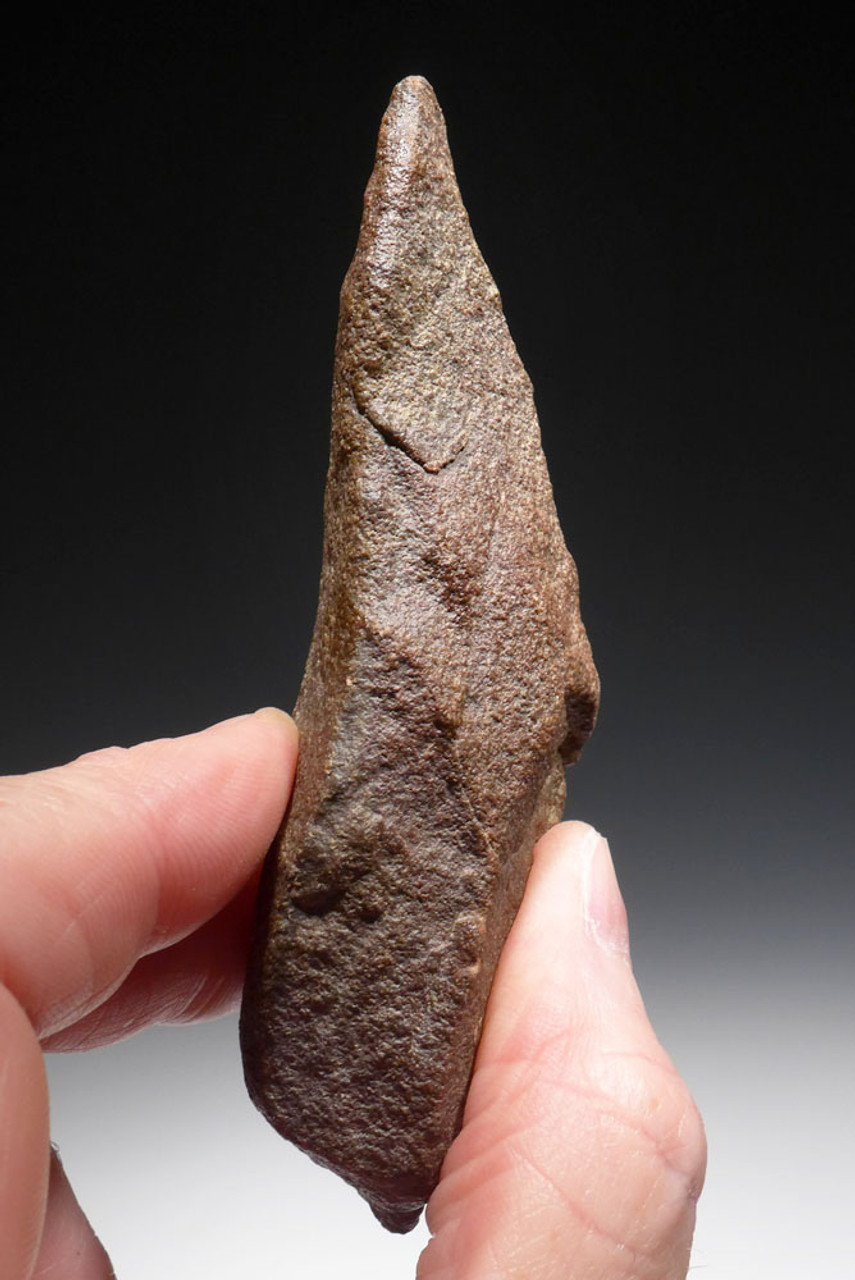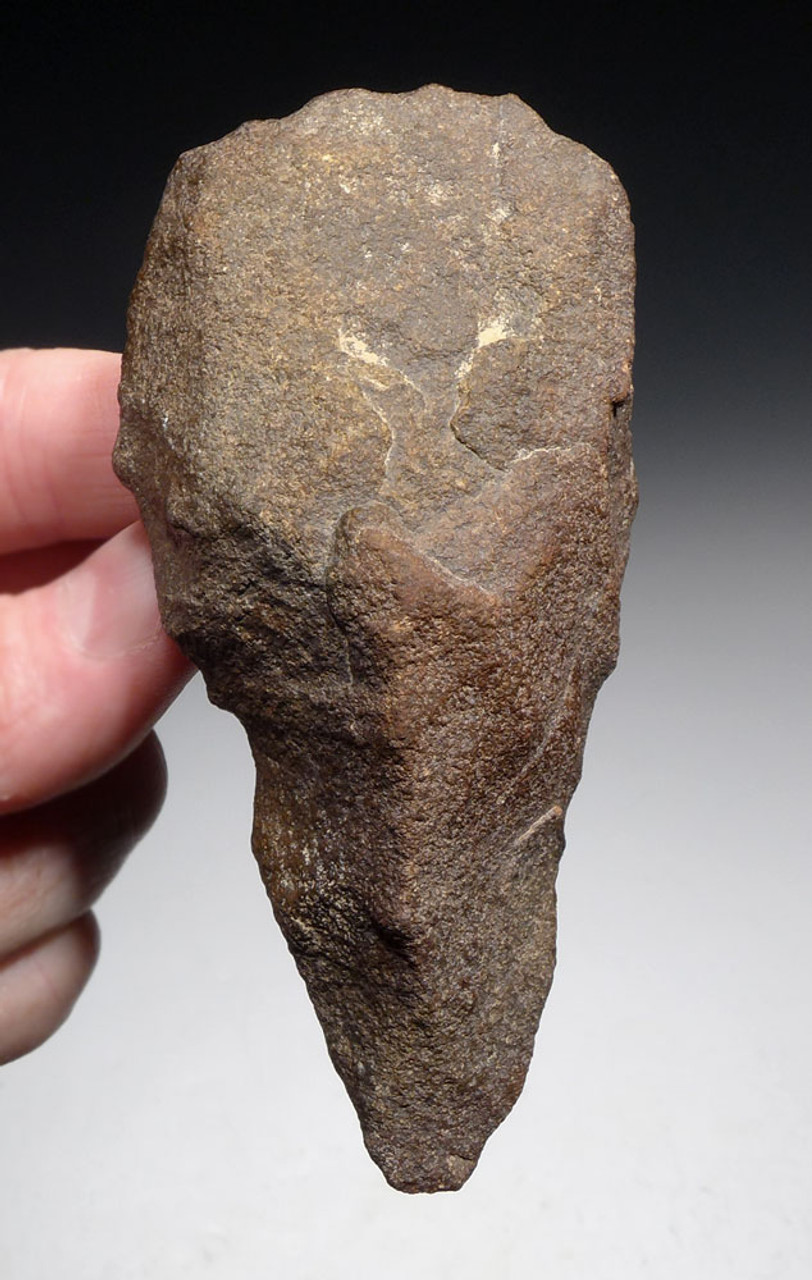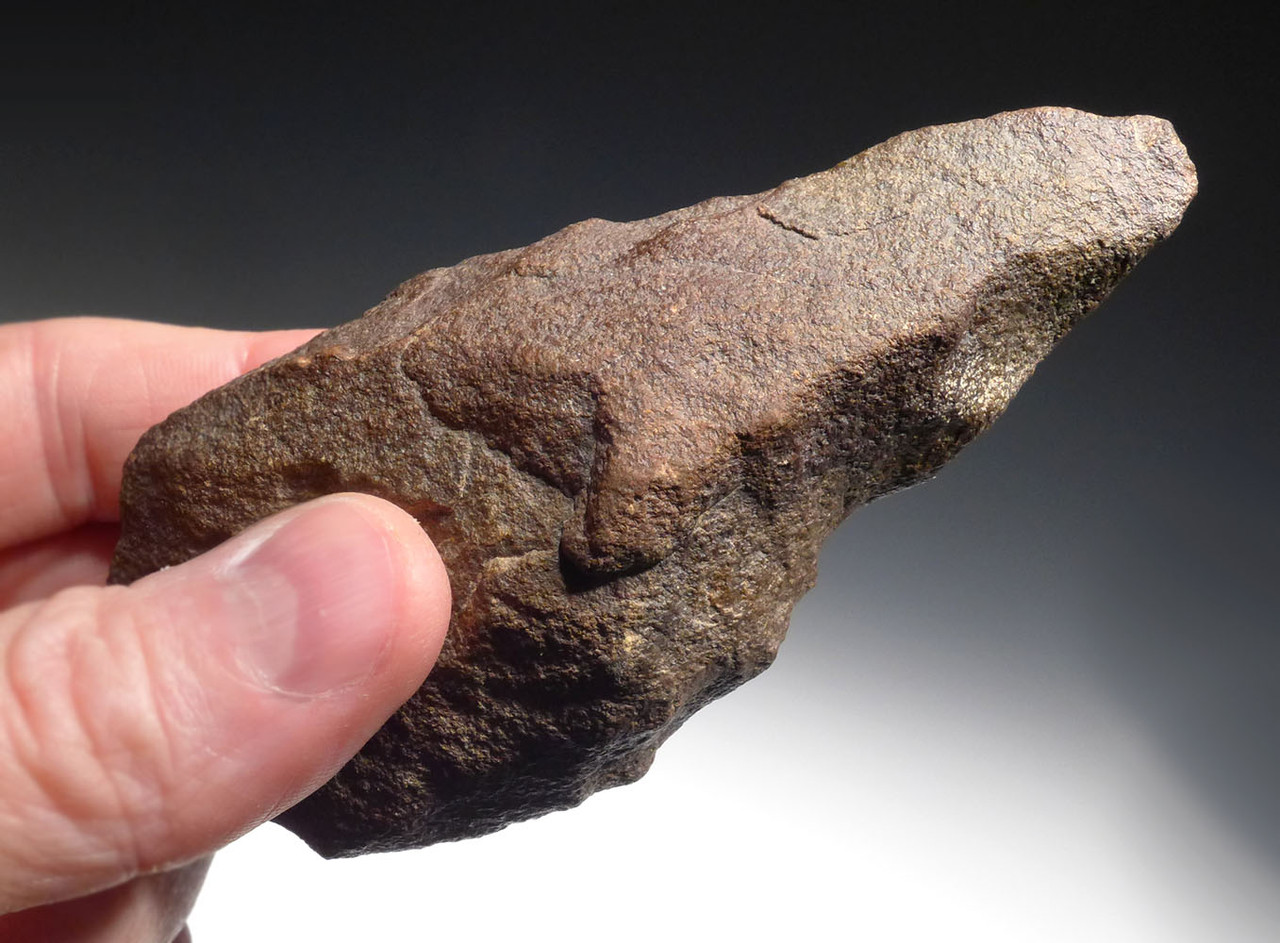Product Description
SEE MORE MOUSTERIAN MIDDLE STONE AGE TOOLS
This genuine Mousterian hand axe was made and used by prehistoric humans of the Middle Stone Age of North Africa. While Neanderthals were the toolmakers of the Mousterian in Europe, the present classification for Mousterian toolmakers of Africa is Archaic Homo sapiens. In time, it is possible Neanderthal discoveries will come to light in North Africa. This exceptional hand axe was surface-collected from an exposed Middle Paleolithic site in the Sahara Desert of Northwest Africa. Middle Paleolithic hand axes from Africa bear similarities to their earlier Acheulean predecessors yet, with more refined flaking and on a reduced size.
Made of quartzite, this is an African Mousterian LANCEOLATE bifacial hand axe. The smaller size of these bifaces of the period leave some unanswered questions as to their purpose. While they could have been functional as used in the hand, it is also possible they were hafted onto a wooden handle. But what were their exact purpose? A demonstration of tool-making prowess? Art? Barter? Or were they more commonly used by woman and children with their smaller hands and lighter stature?
This superb specimen is complete with expert secondary flaking to refine its profile and form. The proximal end has been flaked flat for a comfortable grip against the palm. The unusually delicate tip has survived intact and complete as originally made - very rare! Original sediment and mineral encrustations are still present in microscopic crevices - an irrefutable indicator of prehistoric age and authenticity of ALL Paleolithic artifacts.
The entire hand axe is patinated with an light "desert varnish" patina from resting exposed for millennia in the open desert. "Desert Varnish" is a term for the glossy surface feature of some Saharan desert Paleolithic stone artifacts caused by the wind-driven sand that polished and deposited microscopic layers of silica on the surfaces of the artifact over time, giving it a sheen.
 US DOLLAR
US DOLLAR
 EURO
EURO
 AUSTRALIAN DOLLAR
AUSTRALIAN DOLLAR
 CANADIAN DOLLAR
CANADIAN DOLLAR
 POUND STERLING
POUND STERLING




















